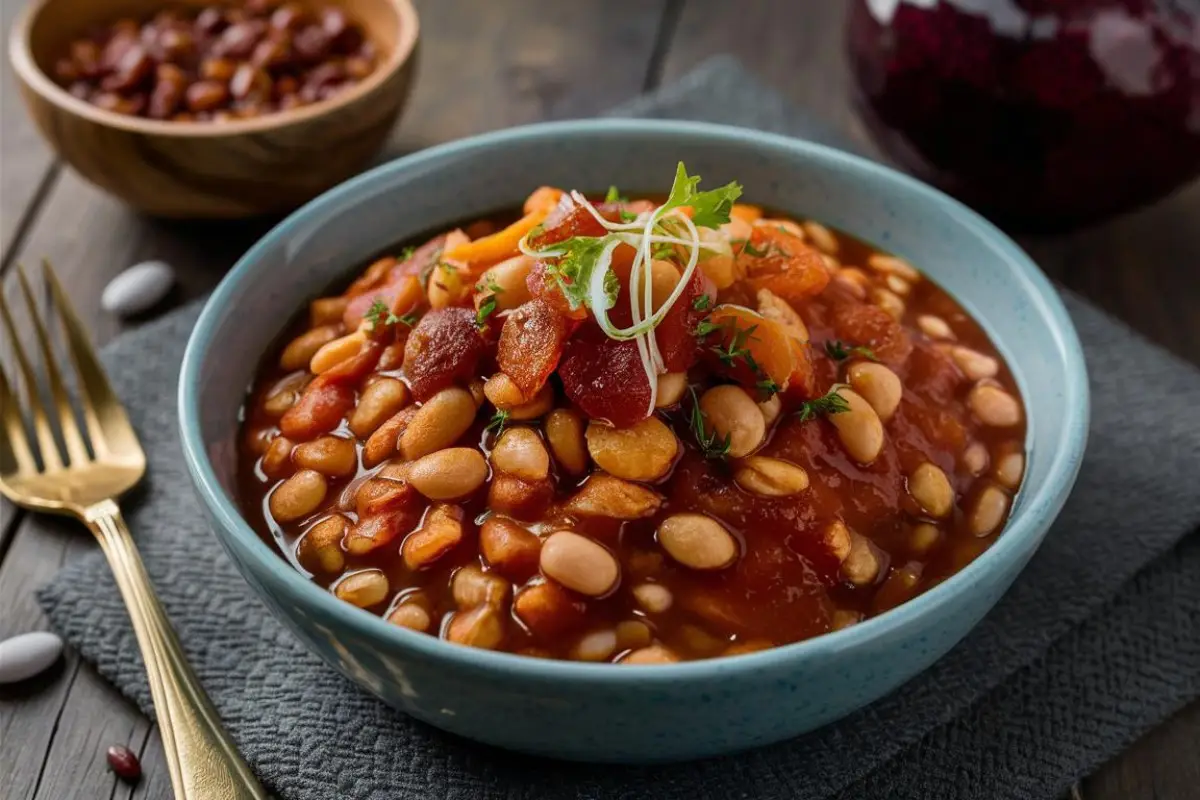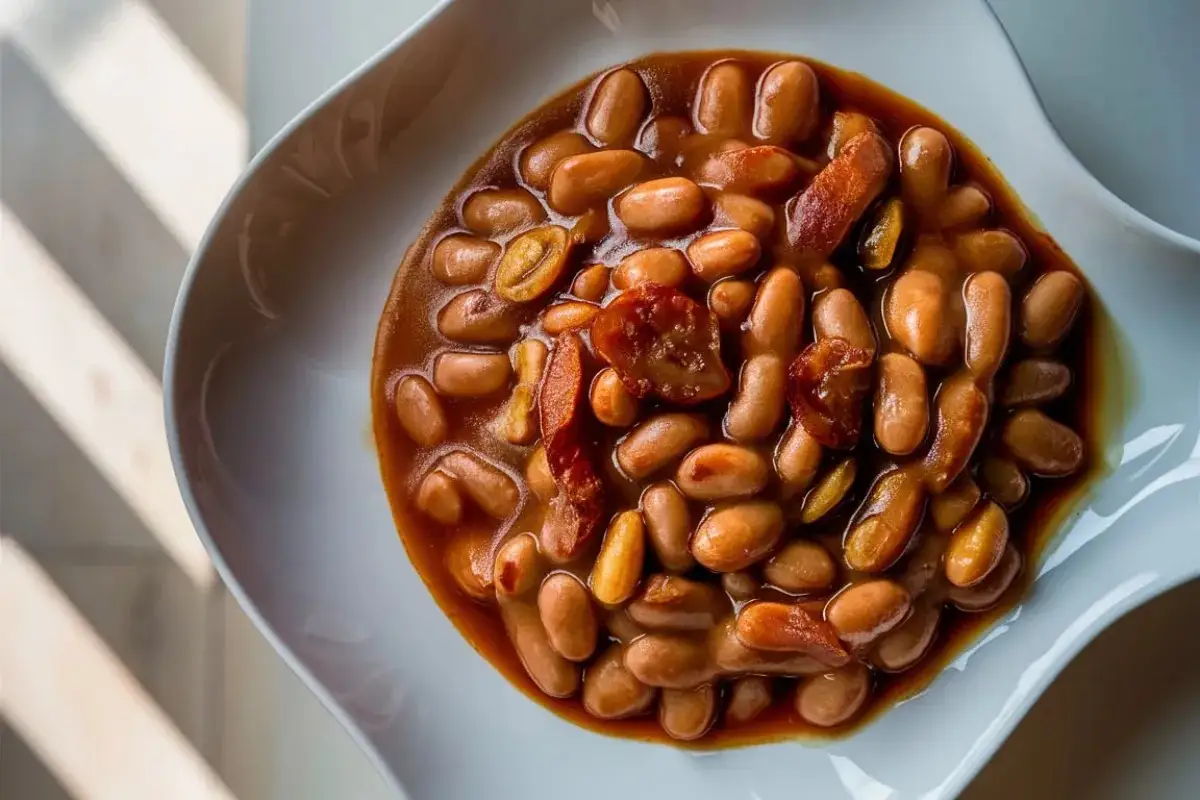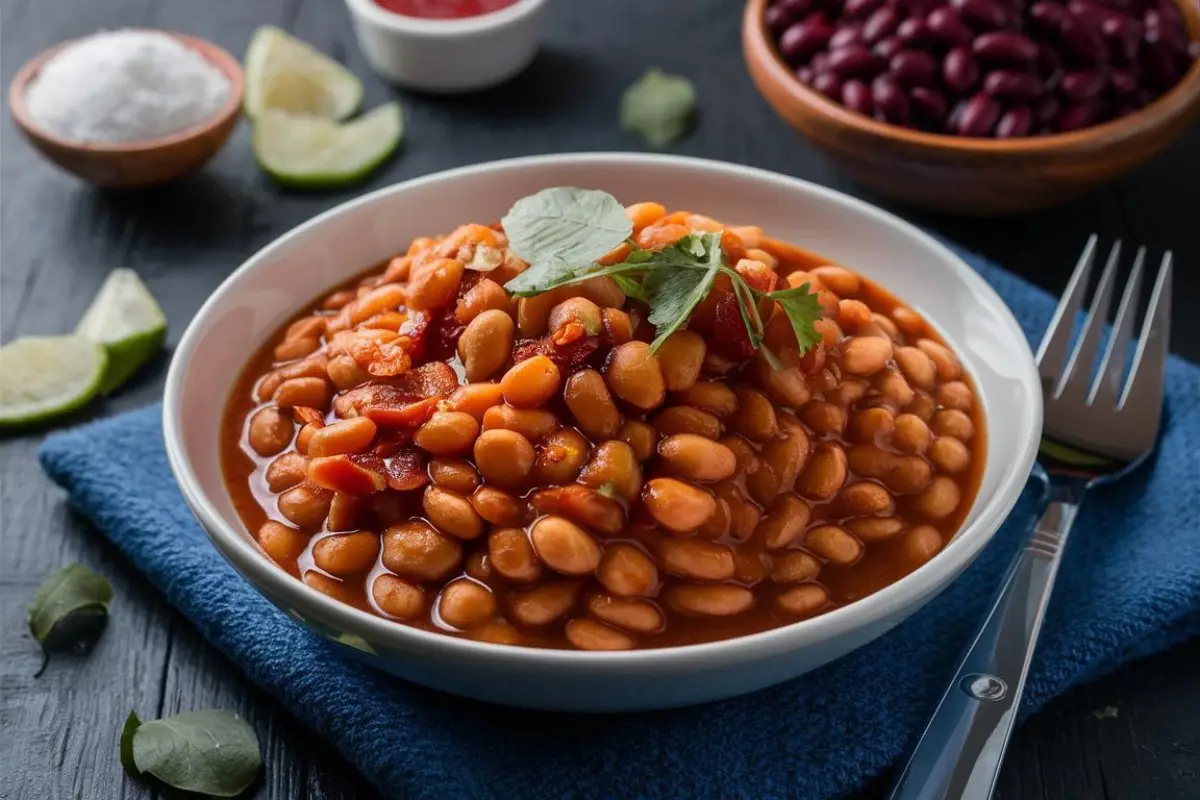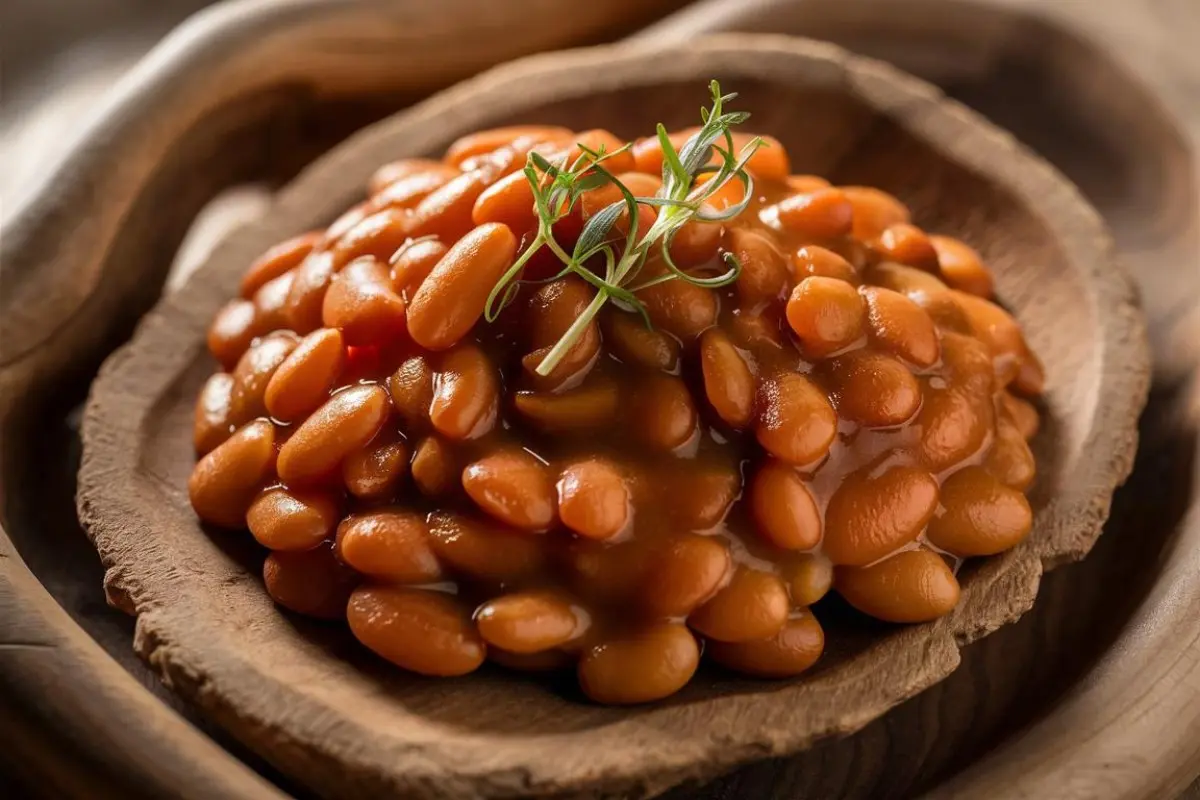Baked beans are a beloved dish with deep roots in many culinary traditions. Whether enjoyed as a side dish at a summer barbecue or as a hearty main course during the colder months, baked beans have a way of comforting the soul. But what makes baked beans truly stand out is the types of beans used in baked beans. The type of bean you use can greatly affect the dish’s flavor, texture, and overall appeal. This guide will explore the different types of beans used in baked beans, their characteristics, and how each variety contributes to the final dish.
The Rich History of Baked Beans
Baked beans have a fascinating history that spans centuries. The dish’s origins trace back to Native American tribes in the northeastern United States. These tribes cooked beans with fat, sweeteners like maple syrup, and sometimes dried meats to create a hearty and sustaining meal. This early version of baked beans was similar to what we recognize today, though it had a few key differences in ingredients and preparation methods.
When European settlers arrived in North America, they adopted and adapted this indigenous dish. They introduced new ingredients such as molasses and pork, which gave the dish a sweet and savory flavor profile. This combination remains popular today. The dish became particularly famous in New England, where it evolved into the classic Boston baked beans—a dish traditionally made with types of beans used in baked beans like navy beans, molasses, and salt pork.
As baked beans spread across the United States and beyond, regional variations emerged. Each region brought its own twist to the recipe, often influenced by local ingredients and culinary traditions. These regional differences also led to the use of various types of beans, each contributing a unique flavor and texture to the dish.
The Role of Beans in Baked Beans
Beans are the heart and soul of baked beans. They provide the bulk of the dish and play a crucial role in determining its flavor and texture. The types of beans used in baked beans can influence how the dish holds together during cooking and how well it absorbs the flavors of the other ingredients.
Why Bean Selection Matters
Selecting the right types of beans used in baked beans is essential for creating a successful dish. Different beans have varying textures, flavors, and cooking times. These factors all impact the final result. For instance, some beans may break down more easily during cooking, resulting in a creamier dish. Others hold their shape better, providing a more robust texture.
In addition to texture, the flavor of the beans themselves can complement or contrast with the other ingredients in the dish. A bean with a mild flavor might allow the sweetness of the molasses to shine. In contrast, a bean with a more robust flavor could add depth and complexity to the dish.
Understanding these nuances is key to choosing the right types of beans used in baked beans. In the sections below, we’ll explore some of the most popular beans used in baked beans and discuss how each one contributes to the dish.

Primary Beans Used in Baked Beans
Navy Beans: The Traditional Choice
Navy beans are perhaps the most traditional choice for baked beans. These small, white beans have been a staple in American kitchens for centuries. They are particularly popular in New England, where they are the main ingredient in Boston baked beans.
- Flavor and Texture: Navy beans have a mild flavor and a creamy texture when cooked. This makes them ideal for absorbing the sweet and savory flavors of the other ingredients in baked beans. Their small size also means they cook relatively quickly, making them a convenient choice for this dish.
- Historical Significance: Navy beans got their name because they were a staple food for the U.S. Navy in the 19th century. Their long shelf life and high nutritional value made them an ideal food for sailors on long voyages. Today, navy beans remain a popular choice for baked beans due to their versatility and ease of use.
Navy beans are an excellent choice if you’re looking for a classic baked beans recipe. Their mild flavor allows the other ingredients to shine, while their creamy texture adds a comforting richness to the dish.
Great Northern Beans: A Nutty Alternative
Great Northern beans are another popular choice for baked beans. These beans are slightly larger than navy beans and have a distinct nutty flavor.
- Flavor Profile: Great Northern beans have a more pronounced flavor than navy beans. Their subtle nuttiness adds depth to the dish. This makes them a good choice for recipes that incorporate a variety of herbs and spices. The beans’ flavor can hold its own against stronger ingredients.
- Texture: The texture of Great Northern beans is firmer than that of navy beans. This makes them ideal for baked beans recipes where you want the beans to retain some shape. They provide a bit of bite and hold up well during long cooking times.
If you’re looking to add a bit of complexity to your baked beans, Great Northern beans are an excellent option. Their nutty flavor and firm texture make them a versatile choice that can complement a wide range of ingredients.
Pinto Beans: The Earthy Choice
Pinto beans are a popular choice for baked beans in the southern United States. These beans are larger and have a more pronounced earthy flavor. This makes them ideal for heartier baked beans recipes that incorporate bold flavors and spices.
- Flavor and Aroma: Pinto beans have a rich, earthy flavor that pairs well with smoky and sweet ingredients like bacon and molasses. Their robust aroma adds an additional layer of complexity to the dish. This makes them a favorite in regions where bold flavors are appreciated.
- Cultural Influence: Pinto beans are widely used in Southwestern and Mexican cuisines, where they are often paired with spices like cumin and chili powder. This cultural crossover has made pinto beans a popular choice in baked beans recipes that incorporate these flavors.
If you enjoy baked beans with a bit of a kick, pinto beans are a great option. Their earthy flavor and ability to hold up to bold spices make them an excellent choice for creating a baked beans dish with a Southwestern twist.
Exploring Other Bean Varieties for Baked Beans
Cannellini Beans: The Italian Connection

Cannellini beans, also known as white kidney beans, are a staple in Italian cuisine. These large, white beans have a creamy texture and a slightly sweet flavor, making them a unique choice for baked beans.
- Flavor Profile: Cannellini beans bring a mild, slightly sweet taste to baked beans. This can balance out the stronger flavors of the dish. Their large size also adds visual appeal, creating a more diverse texture in the dish.
- Versatility: In addition to their use in baked beans, cannellini beans are commonly found in soups, stews, and salads. Their versatility makes them a great addition to any pantry. They can be a creative alternative in traditional baked beans recipes.
Cannellini beans are an excellent choice for those who want to experiment with different flavors in their baked beans. Their sweetness can add an interesting contrast to the traditional flavors of the dish, making them a unique and delicious option.
Kidney Beans: The Hearty Option
Kidney beans are known for their firm texture and bold flavor. While they are more commonly used in chili, they can add a hearty, substantial element to baked beans.
- Flavor and Texture: Kidney beans have a strong, slightly sweet flavor that can stand up to bold spices and seasonings. This makes them a good choice for baked beans recipes that include ingredients like mustard, garlic, or Worcestershire sauce. Their flavor is robust enough to hold its own in a dish with multiple strong flavors.
- Visual Appeal: The deep red color of kidney beans provides a striking contrast to the lighter beans typically used in baked beans. This adds visual interest to the dish and an element of surprise to each bite.
Kidney beans are a great option for those who want a heartier, more substantial baked beans dish. Their firm texture and strong flavor make them a good match for recipes that incorporate bold spices and seasonings. They add depth and richness to the dish.
Black-Eyed Peas: A Southern Twist
Black-eyed peas are a staple in Southern cuisine. While they are not traditionally used in baked beans, they can add a unique flavor and texture to the dish.
- Flavor Profile: Black-eyed peas have a mild, slightly earthy flavor. This pairs well with the rich, savory flavors of baked beans. This makes them a good choice for recipes that incorporate smoked meats or other strong-flavored ingredients. Their subtle flavor allows them to complement the dish without overpowering it.
- Texture: Black-eyed peas have a firm texture that holds up well during cooking. This makes them ideal for baked beans recipes that require longer cooking times. Their firm texture adds a pleasant contrast to the softer beans traditionally used in baked beans.
- Cultural Significance: Black-eyed peas are often associated with Southern cuisine, where they are traditionally eaten on New Year’s Day for good luck. Their inclusion in baked beans can add a touch of Southern flair to the dish. This makes it a unique and culturally rich option.
Black-eyed peas are an excellent choice for those who want to experiment with different flavors in their baked beans. Their mild flavor and firm texture make them a versatile addition to the dish. Their cultural significance can add an interesting story to your baked beans recipe.
Butter Beans: The Creamy Choice
Butter beans, also known as lima beans, are large, flat beans. They have a creamy texture and a slightly sweet flavor. They are not as commonly used in baked beans but can add a rich, velvety texture to the dish.
- Flavor: Butter beans have a mild, slightly sweet flavor that pairs well with the savory elements of baked beans. Their sweetness can add a subtle contrast to the dish, making it more complex and interesting.
- Texture: Butter beans have a smooth, creamy texture that makes them an excellent choice for recipes that call for a rich, velvety mouthfeel. They can also hold their shape well during cooking. This adds a bit of texture to the dish without becoming mushy.
- Cooking Time: Butter beans require longer cooking times compared to other beans. They are best suited for recipes that involve slow cooking or baking. This allows them to fully develop their creamy texture and absorb the flavors of the dish.
Butter beans are a great option for those who want to add a rich, creamy texture to their baked beans. Their mild flavor and smooth texture make them a versatile addition to the dish. They add depth and richness that can elevate the overall experience of eating baked beans.

How to Choose the Right Bean for Your Baked Beans Recipe
Choosing the right bean for your baked beans recipe is crucial to achieving the desired flavor, texture, and overall dish quality. Here are some factors to consider when selecting the best types of beans used in baked beans for your recipe:
Consider the Texture
- Creamy Texture: If you prefer a creamier texture in your baked beans, navy beans or cannellini beans are excellent choices. These beans have a soft texture that melts in your mouth. They create a smooth, velvety dish.
- Firm Texture: For a firmer texture, consider using Great Northern beans, kidney beans, or black-eyed peas. These beans hold their shape well during cooking, providing a satisfying bite in each spoonful.
- Balance of Creamy and Firm: If you want a balance between creamy and firm textures, pinto beans are a great option. They are soft enough to create a creamy dish. However, they still hold their shape, adding some texture.
Match the Flavor Profile
- Mild Flavor: For a mild flavor that allows the other ingredients to shine, navy beans or Great Northern beans are ideal. These beans have a neutral taste that absorbs the flavors of the dish. This makes them versatile and easy to work with.
- Rich, Earthy Flavor: If you prefer a richer, earthier flavor, pinto beans or black-eyed peas are excellent choices. These beans add depth to the dish, making it more complex and flavorful.
- Slightly Sweet Flavor: For a subtle sweetness, consider using cannellini beans or butter beans. These beans add a touch of sweetness to the dish. They balance out the savory and spicy elements.
Consider the Cooking Time
- Quick Cooking: If you’re short on time, canned beans are a convenient option. However, if you’re using dried beans, navy beans and pinto beans generally have shorter cooking times compared to larger beans like butter beans.
- Slow Cooking: For recipes that involve slow cooking or baking, Great Northern beans and kidney beans are ideal. These beans can withstand long cooking times without becoming mushy. This ensures a perfect texture every time.
Tips for Perfect Baked Beans
Creating the perfect baked beans dish requires more than just choosing the right types of beans used in baked beans. Here are some expert tips to help you achieve the best results:
- Soak Dried Beans: If you’re using dried beans, soak them overnight. This reduces cooking time and ensures even cooking. It also helps to soften the beans, making them easier to cook.
- Use a Slow Cooker or Oven: Baked beans benefit from slow cooking. This allows the flavors to meld together and the beans to absorb the seasonings. Use a slow cooker or bake them in the oven at a low temperature for several hours. This method produces the best results.
- Experiment with Sweeteners: While molasses is the traditional sweetener for baked beans, you can experiment with other options like maple syrup, brown sugar, or honey. Each sweetener will add a different flavor profile to the dish. This allows you to customize it to your taste.
- Don’t Add Acidic Ingredients Too Early: Acidic ingredients like tomatoes or vinegar can prevent beans from softening. Add them towards the end of the cooking process. This ensures the beans cook properly and achieve the desired texture.
Frequently Asked Questions (FAQs)
1. What are the best types of beans to use in baked beans?
- The best types of beans for baked beans include navy beans, Great Northern beans, pinto beans, and cannellini beans. Each type offers a unique flavor and texture, allowing you to customize your dish based on your preferences.
2. Can I use canned beans for baked beans?
- Yes, canned beans can be used for baked beans. They are convenient and save time since they are pre-cooked. However, make sure to rinse them well to remove excess sodium before using them in your recipe.
3. How do the different types of beans affect the flavor of baked beans?
- Different types of beans bring distinct flavors and textures to baked beans. Navy beans offer a creamy texture, while Great Northern beans add a nutty flavor. Pinto beans provide an earthy taste, and cannellini beans contribute a mild, slightly sweet flavor.
4. Can I mix different types of beans in one baked beans recipe?
- Absolutely! Mixing different types of beans can add complexity to the flavor and texture of your baked beans. For example, combining navy beans with pinto beans can create a dish with both creaminess and a robust, earthy flavor.
5. Are there any beans I should avoid using in baked beans?
- While most beans work well in baked beans, some beans with strong flavors, like black beans, might overpower the dish’s traditional sweet and savory profile. However, it ultimately depends on your personal taste preferences.
Conclusion
The type of beans you choose for your baked beans recipe can significantly impact the flavor, texture, and overall success of the dish. Whether you opt for traditional navy beans, the nutty Great Northern beans, or the earthy pinto beans, each variety brings something unique to the table. By understanding the characteristics of each types of beans used in baked beans and how they interact with other ingredients, you can create a baked beans dish that is both delicious and perfectly suited to your taste.
Remember, the key to great baked beans is not just the type of beans you use, but also how you cook them and the flavors you combine them with. With the right ingredients and techniques, you can elevate your baked beans from a simple side dish to a standout meal that everyone will love. The next time you’re planning to make baked beans, take the time to choose the right types of beans used in baked beans and experiment with different flavors and textures. You might just discover a new favorite recipe.
For more insights into ingredient combinations and creative cooking, you might find the articles on taco pasta shells recipe and alternative frying taco shells helpful. These articles explore innovative ways to use common kitchen ingredients. Similarly, different types of beans used in baked beans can transform your recipe.

